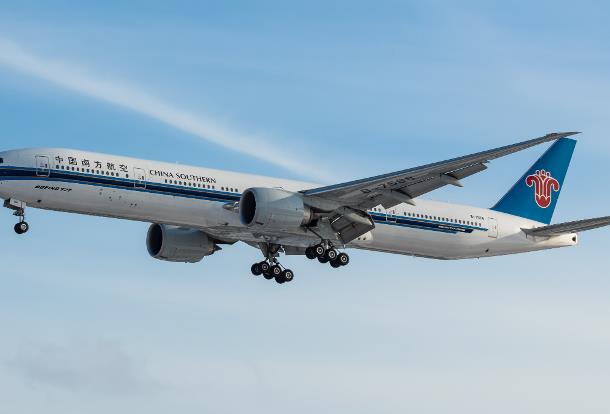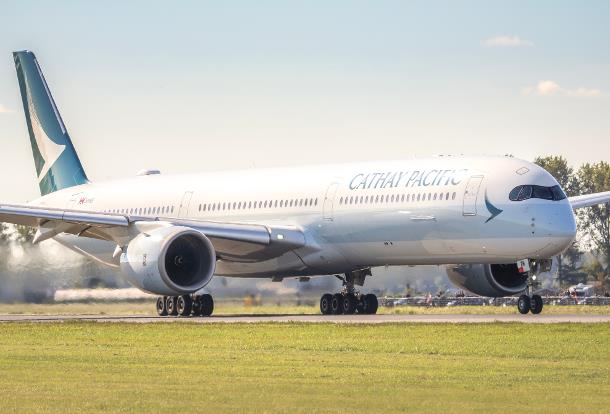ChinaTravelNews, Ritesh Gupta - E-commerce executives working for airlines in China are devising plans, taking cues from relatively experienced carriers to excel in this arena.
What’s the biggest challenge that an airline user experience (UX) specialist faces today?
The most likely answer would be “not being aligned to the way travellers think.”
If we talk of a benchmark, of course, the same would depend upon the digital vision of the airline. What is that the organization intends to serve the customer with?

So, for example, if we consider Ryanair, the organization aspires to make the airline core to everyone’s travel plans and become the platform of choice for all travel needs, not just flights. The gap lies in dealing with linear and complex flows, static pages and also trying to sell everything at once. Ryanair believes the digital strategy would revolve around being dynamic, contextual and relevant. The focus should be on optimizing the booking funnel based on understanding of the customer - right product offering at the right time at the right place.
So carriers are generally trying to streamline the booking flow on their own platforms. From my interactions with several airlines executives across the globe, including ones in China, it is clear that every airline is at a different point in its pursuit of personalization.
“It’s time the industry does away with its tendency to trying to sell everything or sell more seats at a relatively higher price. Rather airlines needs to strengthen their data infrastructure first, and then blend it with requisite air ancillaries and non-air ancillaries to meet the trip essentials of a traveller,” said Jessie Chen, senior architect, product manager, UX team manager, China Southern Airlines.
Making right moves
1. Target low hanging fruit with collaboration: Even till today “big data” isn’t completely understood, and this whole exercise, as a senior executive from BMI says, is hard, costly. What needs to be done to run an efficient data-driven set up (from infrastructure perspective) that also complements the omni-channel presence? How this data needs to be managed (for instance, understanding my intent from the source I land up on an airline website or say I use a search engine and then open an airline mobile app)?
A lean experimentation approach would be beneficial initially, says Dublin, Ireland-based Pankaj Gabba, VP Product Strategy at OpenJaw Technologies.
Gabba recommends following steps:
(1)Firstly do enough homework to identify some of the low hanging fruits (short term goals). Digital marketing and operation teams are key contributors at this stage. Identify and outline what you want to know from the data and to do what? Now identify the data sources needed to answer your queries and start aggregating the data sets.
(2)The point is that you might not initially require the Big Data storage and technologies. Try out small first and then hire a specialised vendor/ partner, when you are ready to go big. It’s a specialized area with high costs associated to it.
(3)A strong collaboration is needed between strategy, marketing, operations, analytics and IT teams for this to be successful, asserts Gabba.
“A partnering approach should be considered. Test and see what works. Benefits can be realised using ‘small data’ silos available to airlines right now. It does not need to be a ‘big bang’ approach,” says Paul Byrne, OpenJaw’s Senior Vice President –Development.
2. Optimize the booking flow: “We use many tools to monitor the conversion rate. We focus on the booking flow and try to find why users have abandoned,” shared Chen. Airlines in China acknowledge that they need to improve upon areas such as how to respond to complex search criteria, evaluate price and checks seat availability for every possible itinerary option, facilitate comparison shopping spanning the carrier’s network ( codeshare, interline, and alliance partners).
Other than tools, airlines in China also need to look at booking flow optimization. “Booking paths that are too long with too many forced choices (should be avoided). Being required to answer repetitively throughout the booking process ‘No’ to each individual product is annoying, whether it’s across 10 pages or condensed onto one page. There are ways to effectively market these products without being so intrusive,” said a source, underlining the need to avoid showing a similar set to all visitors. Rather there is a need to segment visitors, looking at aspects like the number of visits, click pattern, logged-in users etc.
3. Optimizing designing for different platforms: While traditionally run websites are being managed relatively efficiently based on understanding of network latencies, browser page rendering behavior etc., Chen says a deeper evaluation of mobile site landing pages and designing aspects such as HTML5 is needed at this juncture.
Landing pages can be used for PPC ads, mobile app downloads, promotional campaigns etc. “The significance of mobile landing page experience isn’t being addressed properly,” said Chen. In terms of what smoothens the experience, it also needs to be mentioned that mere responsive web design may not be enough. Responsive design usually entails delivering the same HTML document to all devices. What if it renders aptly, but isn’t fast enough? Would it jeopardize the user experience? The developer community poses such interesting questions from time to time. So there are questions over responsive design not essentially equating to mobile-compatible.
4. Offer management: Every carrier needs to have a clever retailing approach that maximizes value for both the airline and the traveller. Bundling, fare families, ancillary services are all important parts of this equation. Chen says the airline has started offering options such as seat selection or paying for extra baggage on international flights. Unless airlines find a mechanism to introduce new fares or ancillaries rather quickly, there won’t be ample opportunities to cross-sell at various touchpoints.
5. Cross-device tracking: Carriers, just like other travel e-commerce brands, aren’t finding it easy to handle the tendency of shopping on several avenues such as PC site, mobile site etc. For instance, it’s definitely not easy to unite unidentified visits that initiate on desktop, mobile web or app, and then unify them post log-ins. Also, with tracking, carriers also have to ensure they don’t end up violating the privacy protection policy. Chen says accuracy is the biggest issue as far as identifying a user is concerned, but the industry is working on the same.




